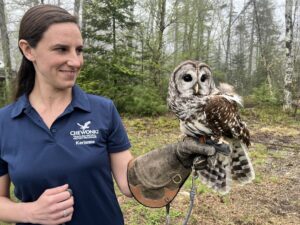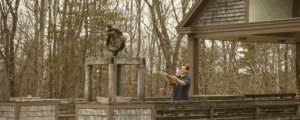What conspicuous life form do you surely see almost every day and almost everywhere, and yet, predictably, overlook or outright dismiss it as insignificant? If you recall that catchy little jingle from Nature Study that goes, “Freddy Fungus and Alice Alga took a lichen to each other (and got married)”, you have your answer: the lowly LICHEN.
You can appreciate lichens on many levels. They are beautiful with colors ranging from vibrant yellow, orange and red to the most delicate pastels. They have interesting growth patterns, from simple crusts on tree bark and rock (crustose lichens) to elaborate leafy (foliose lichens) and branched , brushy (fruticose lichens) forms. But, if “Freddy and Alice” are all that you know about lichen biology, then you’re missing out on one of the most amazing stories in all of Natural History.

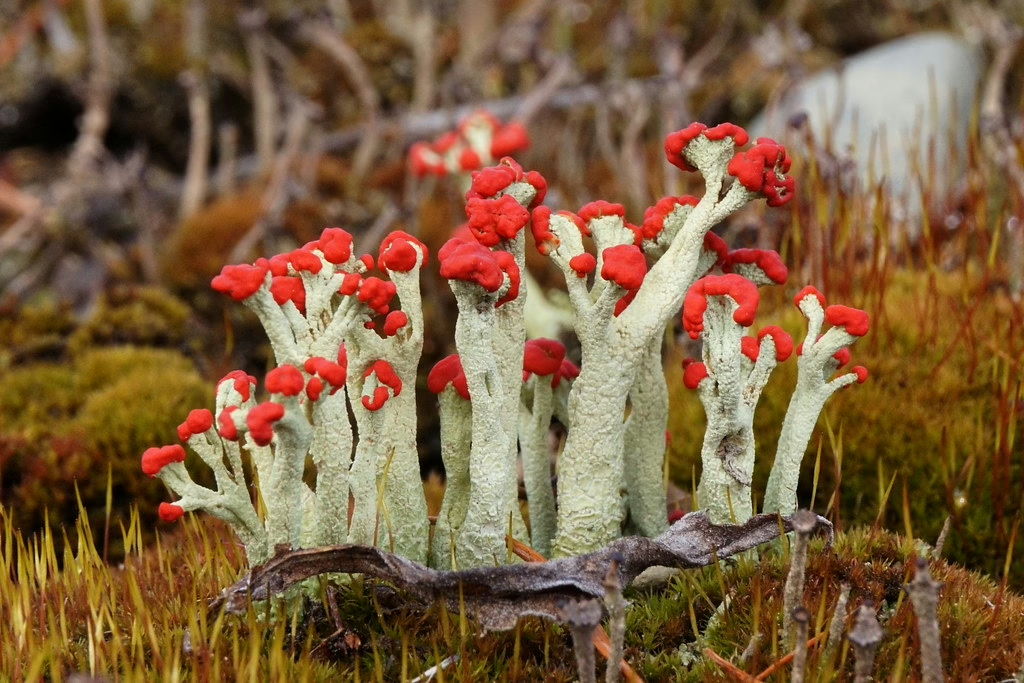
British Soldiers Lichen (Cladonia cristatella; fruticose)
Lichens are the quintessential synthetic/SYMBIOTIC forms of life on Earth. In fact the very notion of what symbiosis is derives directly from the lichen condition. Tiny or big (up to several meters!), a lichen is formed mostly by one individual from about 20K species of specialized “sac fungi” (Ascomycota), constituting most of its bulk and called the lichen mycobiont (i.e., “Freddy”). Lichens are named biologically according to their mycobiont species. The hyphae (fungal “strands”) of the mycobiont’s mycelium intimately embrace and connect with the cells of an incorporated colony of very specialized green algae (in 87% of lichens, i.e., chlorolichens), or blue-green (cyano-)bacteria (in 10% of lichens, i.e., cyanolichens), or rarely both ( 3% of lichens). These lichen photobionts carry out photosynthesis to “feed” the lichen. Taken together, the myco- and photobionts make up the lichen body or thallus. Then there is a loose gaggle of microbial “hangers on” (fungi, bacteria, etc., some parasitic/infectious), constituting the lichen microbiome . Recently, some “club fungus” (basidomycete) yeasts have been found to variably inhabit lichen thalli. The role they play in a potentially larger symbiosis is unclear. Finally, all of this together is the lichen holobiont., which may be best conceived as a metaorganism.
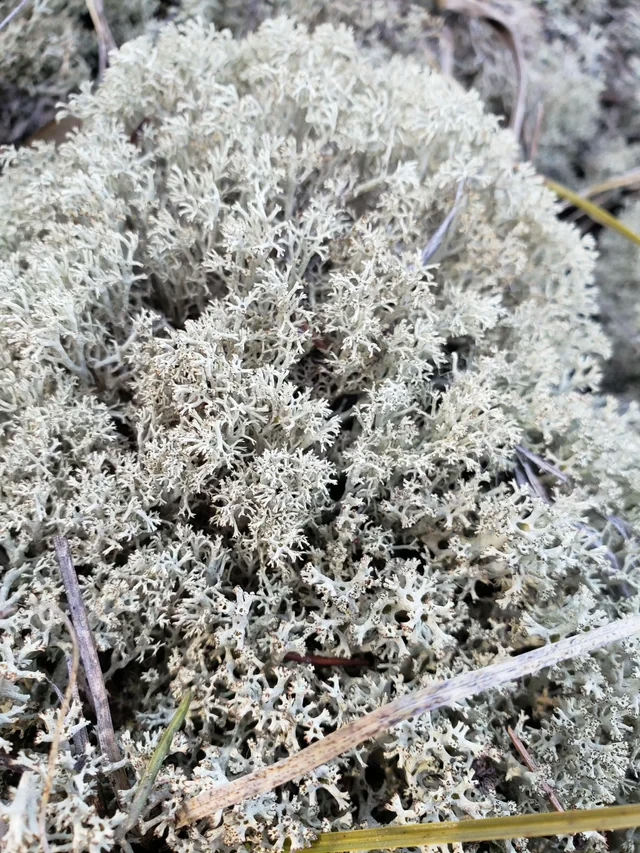
Reindeer Lichen (Cladina rangiferina, fruticose)
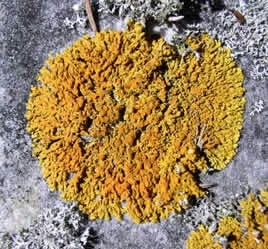
Certainly, there must be a more effective way for lichens to reproduce. Indeed, a great many of them produce what are called vegetative co-dispersal propagules (e.g., soredia, isidia, etc.) These are tiny bundles of cells representing all the essential components of the lichen thallus, basically clones of the lichen. Lichens also can reproduce passively via fragmentation. In any case, purely vegetative reproduction makes sense in very stable ecologies. Sexual reproduction which leads to variation might prove beneficial under conditions of habitat unpredictability. Engaging in both simultaneously could be viewed as a “bet hedging” strategy.
The lichen biotype is ancient. Like the green plant- mycorrhizal symbiosis, lichens have been with us since the dawn of terrestrial life on earth, 400+ million years ago. These two imminently successful evolutionary innovations (~ 20K species, each) intriguingly may be viewed as different ways fungi have escaped the dark Stygian underworld (the earth’s Pedosphere or equivalent) and gone “where no fungus has gone before”, into the aerial realm and the light of day. For mycorrhizae (excepting their mushrooms), this has been a vicarious emergence, since they only experience the outer world remotely through their host plants, while remaining sheltered below ground . But, for lichens which are fully exposed, it’s all or nothing—and that has substantial costs.
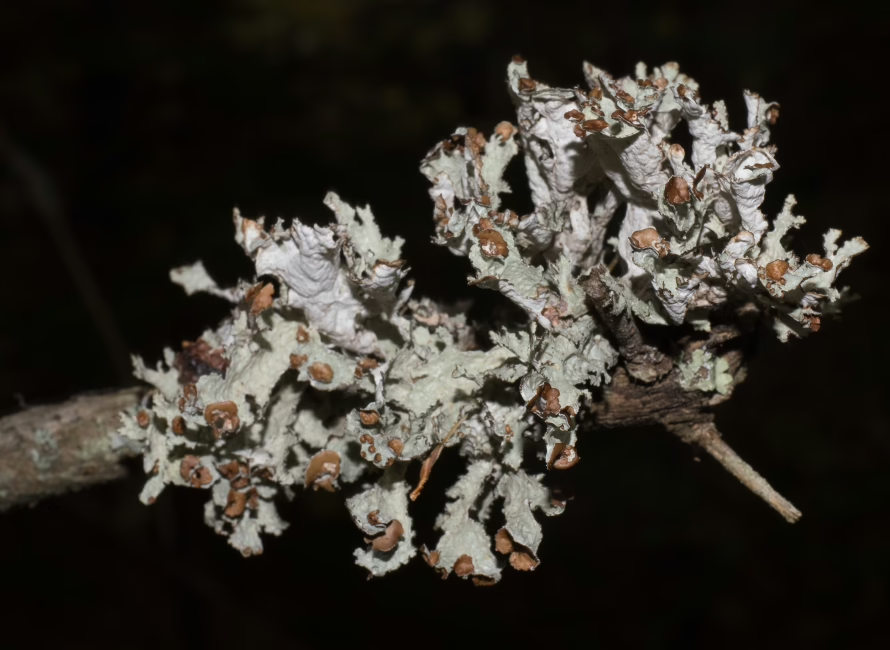
Crumpled Rag Lichen (Platismatia tuckermanii; foliose)
Lichens have evolved to be among the hardiest forms of life on earth. Their extreme abilities are legendary: some have remained totally dry in suspended animation (anhydrobiosis) for decades, and then brought back to life; some have withstood outer space for more than a year, only to grow normally again ; some have been frozen solid in liquid nitrogen and then revived. No wonder lichens can grow virtually everywhere, from the high polar regions to the tropics, in the driest deserts and wettest rain forests. Lichens are estimated to cover 8% to 12% of the world’s land surface (not to mention that some are semi- or fully aquatic).
Yet, for all that, many lichens are acutely sensitive to air quality ,temperature, and moisture content, making them good monitors of pollution and climate change. In the textbook example of natural selection at work, the demise of lichens on tree bark due to toxic factory emissions in 19th C England led to a complete reversal of Peppered Moth adaptive wing coloration frequencies, shifting it almost entirely from a light, lichenesque camouflage pattern to almost entirely black . Then as air pollution gradually abated , the lichens recolonized the tree trunks and the moth wing pattern frequencies reverted to predominantly lichen camouflaged again.

Smooth Rock Tripe (Umbilicaria mammalata; foliose)
Lichens are unable to actively regulate their water balance, which consequently conforms to that of their surroundings (i.e., they are termed poikilohydric) Many lichens can subsist on water vapor alone. In some cases alternation of periods of wetting and drying are required for lichen health, and full water saturation may be detrimental to photosynthesis
Yet, remarkably, it is the inability of lichens to actively hydroregulate that may explain their extreme hardiness. Lichen chlorobionts (but not cyanobionts) make sugar-polyhydric-alcohols as their phothsynthetic products. However, much of this sugar alcohol is not directly metabolized but rather accumulates in the lichen cells. As the lichens undergo severe dehydration this not only reduces disruptive ice formation in the cold, but these special sugar alcohols automatically become a viscous, glass-like, supercooled liquid that protects lichen cells from fatal damage that would otherwise occur.
For its part, the lichen mycobionts and perhaps members of the lichen microbiome, synthesize a variety of exotic phenolic compounds that have a host of beneficial functions for the lichen. Some are sunscreens protecting the photobionts from radiation damage or serving to reduce light levels for more effective photosynthesis. Some are noxious grazer deterrents, especially effective against snails and slugs. Others are antimicrobial and allelopathic agents. preventing, for example, thallus takeover by parasitic fungi, and thwarting space competition with mosses and liverworts and other lichens.
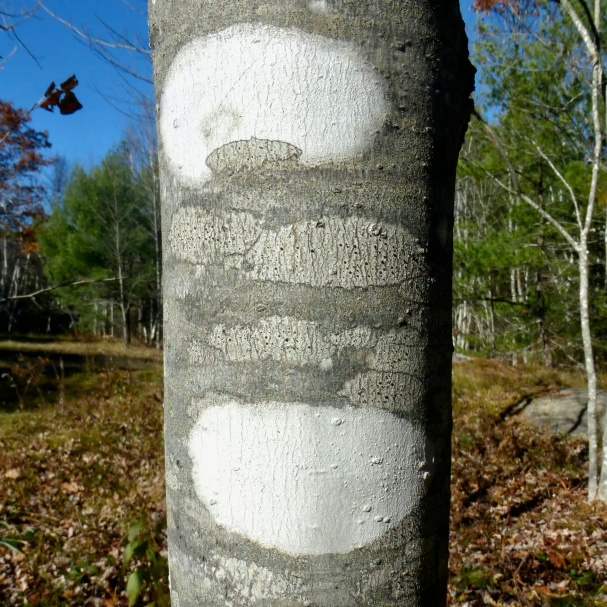
Whitewash Lichen (Phlyctis; crustose)
Lichens are also significant in the bigger ecological picture. For example, cyanolichens are atmospheric N-fixers, and through their death and decomposition they contribute to critical Nitrogen cycling. Lichens create micro -habitats for entire trophic webs, from microbes at the base, through micro arthropod decomposers and predators, and on up to and including birds, and other small vertebrates. Whole lichens are also producers in their own right at the base of larger macroscopic food webs. For instance, so called reindeer moss (Cladonia rangiferina) supports the nutritional needs of entire herds caribou (and even people) in the high Arctic. Rock tripe (e.g., Umbilicaria mammulata common on rocks around Chewonki’s Blueberry Hill) has been used as both a staple and a survival food by many native peoples. Nutritionally, at least some lichens contain proteins with close to the ideal amino acid composition for balanced nutrition.
Consider the beneficial feedback network involving lichens and mycorrhizal fungi within a larger ecological system. Among other things, the North American coniferous forests, festooned with horsehair and other pendulous lichens, supports squirrels and other arboreal rodents, their owl predators, and many mycorrhizal fungi symbiotic with trees. The horsehair lichens (e.g., Bryoria spp.) require trees for support. The arboreal squirrels use the nutritious lichens for both food and nesting material. The squirrels are consumed by large owl (Barred, Great Horned, etc.). But the squirrels also forage the forest floor for underground (mycorrhizal) truffles, which they relish as food, and then proceed to distribute the fungal spores through their scat. After germination the truffle mycelia form new mycorrhizal symbioses with trees and thus the whole forest ecosystem benefits, with new trees supporting healthy lichens supporting squirrels supporting owls…, and so it goes.
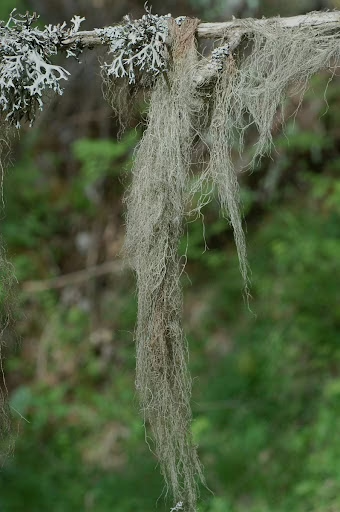
Horsehair Lichen (Bryoria; fruticose)
People have used lichens culturally from time immemorial. Some species are consumed as food, with varying palatability . Reindeer moss (Cladina), already partially digested by the reindeer (!), is considered a delicacy by Laplanders. Stringy pendulous lichens are used for both food and fiber. However it is mostly as fiber and textile dyes that lichens are best known.
The ancient Phoenicians held the proprietary secret for producing the most rare , beautiful and expensive , so-called, Tyrrian Purple cloth of antiquity. We now know that through a complicated process, the dye source was a tiny gland in a Mediterranean rock snail. Overharvesting of snails destroyed the Tyrrian Purple trade , but the enterprising Phoenicians being expert and intrepid sailors managed to discover a new and different source of nearly identical dye out on the Canary Islands and Azores: A lichen. This too, was for a time, a closely guarded secret until the dye producing lichens were found to be widespread. Today this vibrant purple dye called orchil (a form of it even can be produced from the rock tripe lichen mentioned before) is also the source of orcein (a dye used to stain cells for microscopic examination) and of litmus.
The warm brown, yellow, russet dyes used for traditional Scottish tartan plaids all come from local lichens called “crottle”. The downside of all lichen dyes, however, is their lack of light fastness.
Lichens have also been important in folk medicine, being used to treat a host of illnesses, from dermatitis to epilepsy . Lichens were/are also used to stop bleeding, prevent infections and promote would healing. Today pharmaceutical research has identified many specific lichen-derived compounds having antibiotic, antiviral, antitumor, antioxidant, anti-inflammatory, etc. properties. The future looks bright for development of new therapeutic agents from lichen sources.
Well, you now know that there is so much more than Freddy and Alice to be told about our amazing lichens, and here we have barely scratched the surface. Pay attention to lichens (they deserve it) and continue the story on your own.

